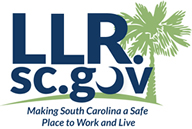Housing Supply Overview
Mortgage rates are on the rise. When this happens, it means that buyers in the lower-priced categories tend to have the dilemma of choosing to pay more for their desired home, paying less to get less, waiting for more listings or saving more money toward a downpayment. For the 12-month period spanning March 2017 through February 2018, Pending Sales in the Western Upstate region were up 1.0 percent overall. The price range with the largest gain in sales was the $300,001 and Above range, where they increased 11.7 percent.
The overall Median Sales Price was up 7.1 percent to $166,000. The property type with the largest price gain was the Condos segment, where prices increased 7.6 percent to $121,636. The price range that tended to sell the quickest was the $100,001 to $150,000 range at 53 days; the price range that tended to sell the slowest was the $300,001 and Above range at 102 days.
Market-wide, inventory levels were down 11.7 percent. The property type that lost the least inventory was the Condos segment, where it decreased 0.8 percent. That amounts to 4.2 months supply for Single-Family homes and 4.2 months supply for Condos.
Monthly Indicators
The three most prominent national market trends for residential real estate are the ongoing lack of abundant inventory, the steadily upward movement of home prices and year-over-year declines in home sales. Sales declines are a natural result of there being fewer homes for sale, but higher prices often indicate higher demand leading to competitive bidding. Markets are poised for increased supply, so there is hope that more sellers will take advantage of what appears to be a ready and willing buyer base.
New Listings were down 8.8 percent to 600. Pending Sales decreased 18.2 percent to 368. Inventory shrank 11.7 percent to 1,820 units.
Prices moved higher as Median Sales Price was up 6.9 percent to $162,000. Days on Market increased 4.7 percent to 89 days. Months Supply of Inventory was down 12.5 percent to 4.2 months, indicating that demand increased relative to supply.
In February, prevailing mortgage rates continued to rise. This has a notable impact on housing affordability and can leave consumers choosing between higher payments or lower-priced homes. According to the Mortgage Bankers Association, the average rate for 30-year fixed-rate mortgages with a 20 percent down payment that qualify for backing by Fannie Mae and Freddie Mac rose to its highest level since January 2014. A 4.5 or 4.6 percent rate might not seem high to those with extensive real estate experience, but it is newly high for many potential first-time home buyers. Upward rate pressure is likely to continue as long as the economy fares well.
To view these, and previous, market reports click here.



